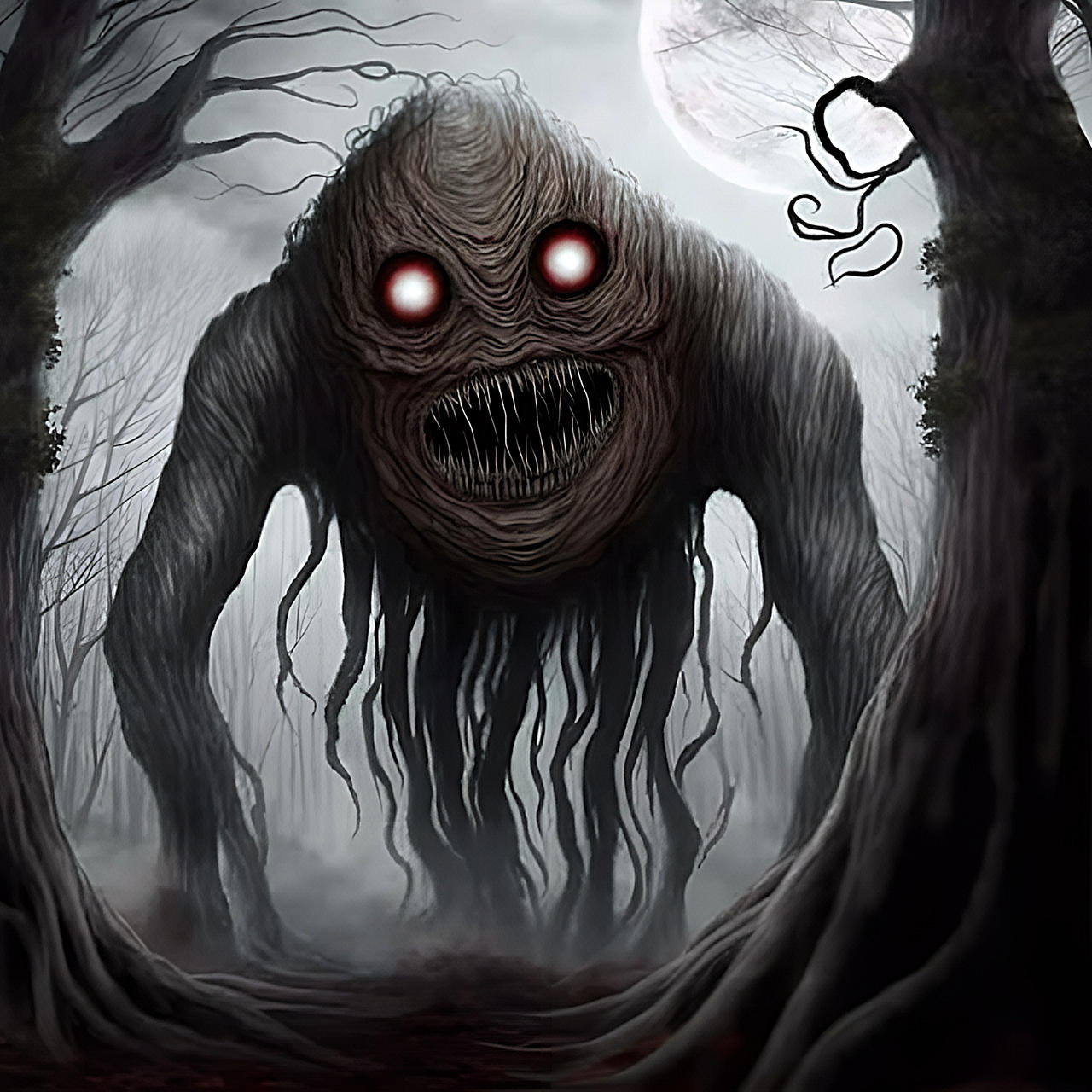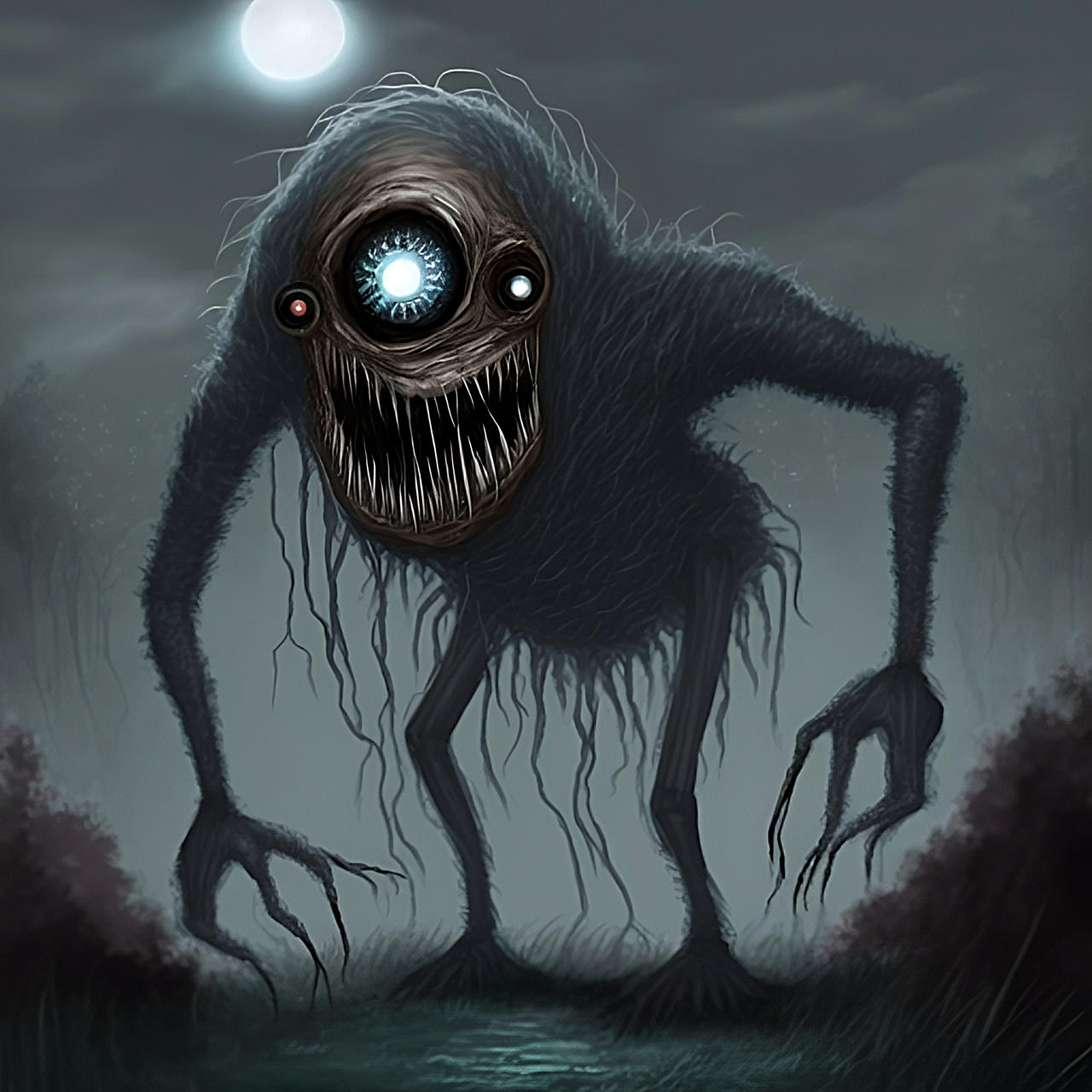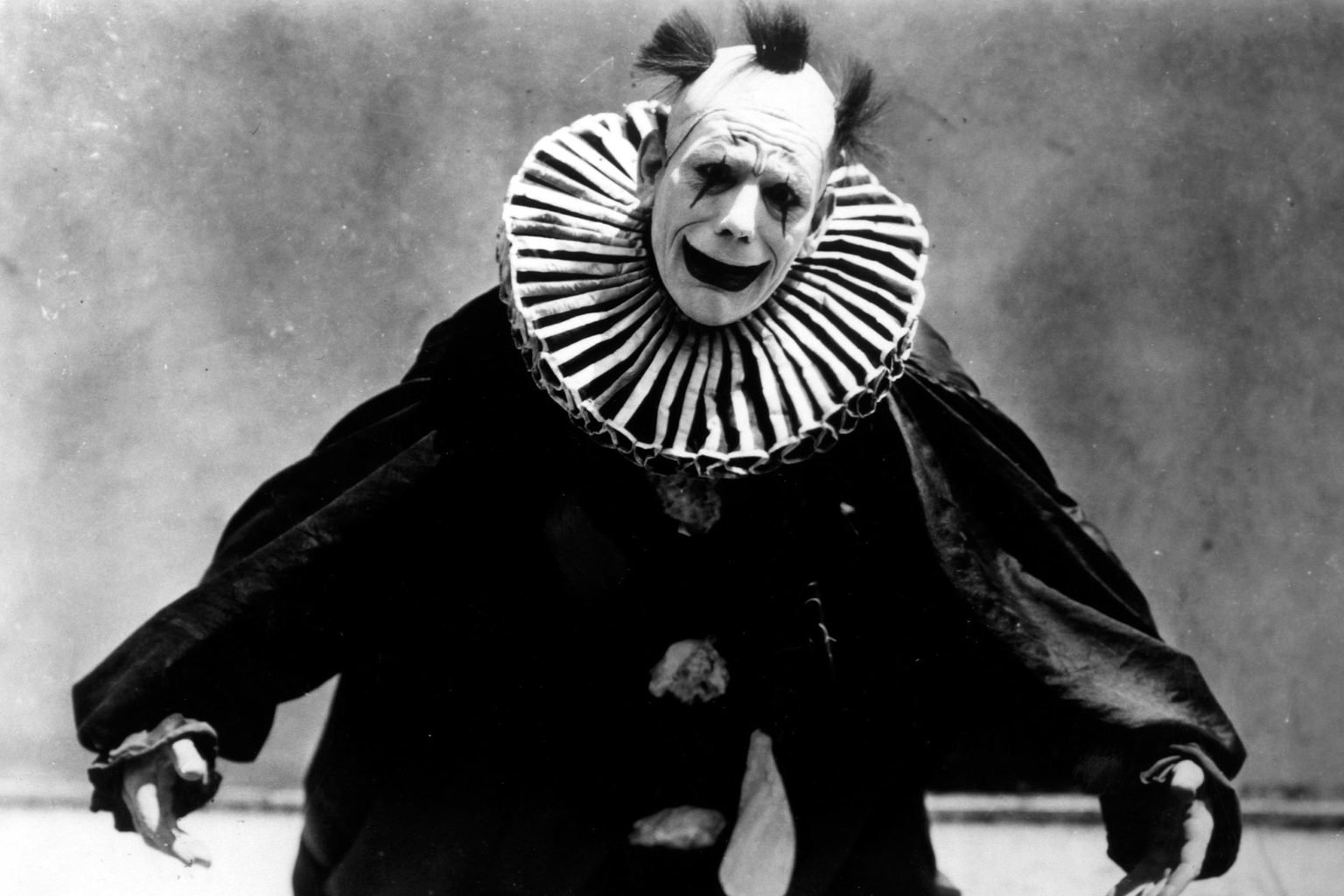There's something about fear, isn't there? That jolt, that quickening pulse, the shiver that runs right down your spine. It's almost, in a way, like a shared experience, particularly when we gather together for a good scare. Think about it: scary, suspenseful, and viscerally thrilling, Halloween set the standard for modern horror films, so too it's almost a communal release of terror and tension when you experience those moments in a theater, something a lot of people just love. It’s entirely fitting audiences came back to theaters screaming, seeking that collective feeling of dread.
This fascination with things that go bump in the night isn't just for the big screen, you know. For ages, people have been drawn to stories and images that make them feel a little uneasy. From ancient myths to chilling tales passed down through generations, we seem to have a deep-seated urge to confront the things that scare us most, often in a safe setting.
But what about art that isn't moving pictures? What about a painting or a sculpture that makes your stomach drop? That's what we call "scary art." It’s a broad idea, really, encompassing pieces that aim to disturb, unsettle, or genuinely frighten the person looking at them. We're going to look into why we find this kind of art so compelling and what makes it so very effective at getting under our skin.
Table of Contents
- What Makes Art Scary?
- A Look at Scary Art Through History
- The Purpose and Power of Scary Art
- Experiencing Scary Art Today
- Frequently Asked Questions About Scary Art
What Makes Art Scary?
So, what exactly turns a picture or a statue into something that sends a chill through you? It’s not just about showing something gory, you know. Scary art often works on a deeper level, playing with our minds and our primal responses. It's about what you don't see as much as what you do, or what it makes you imagine, which is often much worse.
The Psychology of Fear in Art
Our brains are wired to react to certain things. Things that are unknown, things that hint at danger, or things that just feel wrong can trigger a fear response. Scary art, in a way, understands this very well. It uses these triggers to create a feeling of unease or outright dread. It’s a bit like how a suspenseful movie builds tension; it's not the jump scare, but the slow build that really gets to you. That feeling you get when you know something bad is about to happen, but you can't quite put your finger on it, that’s where the power lies.
When you see a piece of art that truly frightens you, it's often because it taps into something already present inside you. Maybe it reminds you of a bad dream, or a story you heard as a child. Perhaps it just looks slightly off, making your brain try to figure out what isn't right. This is a very human reaction, and artists use it to their advantage, really. It’s about creating a connection, even if that connection is one of discomfort.
- The Menendez Brothers Pictures
- Claire Stone Onlyfans
- Downtown Yarns Nyc
- Vixen Plastic Surgery
- Big Booty Oiled Up
Visual Elements That Terrify
Artists have a whole toolkit for making things scary. For instance, color choices play a big part. Dark, muted tones, or stark contrasts between light and shadow can create a very unsettling mood. Think about how a horror film uses dim lighting to hide things, making you strain to see what's lurking. It’s similar in a painting, where deep shadows can suggest unseen horrors.
Then there's distortion. When something familiar looks twisted or out of place, it can be quite disturbing. A face that's just a little too long, or a body that bends in an unnatural way, can make us feel uncomfortable because it breaks our expectations of how things should appear. This manipulation of form is, actually, a powerful way to evoke fear. It challenges our sense of reality, which is a bit unsettling, you know.
Composition also matters a lot. An image that feels unbalanced, or where figures are placed in a way that suggests vulnerability or menace, can make us feel anxious. The use of empty space, or a cluttered, claustrophobic scene, can also contribute to the overall feeling of dread. It's all about guiding your eye to feel a certain way, perhaps a bit trapped or exposed.
Tapping into Our Deepest Fears
Scary art often explores themes that resonate with our deepest, most primal fears. The unknown, for instance, is a classic. What lies beyond the veil? What lurks in the darkness? Art that hints at these mysteries, without revealing everything, can be incredibly frightening. It lets your imagination fill in the blanks, and our imaginations can be pretty wild, you know.
Body horror, too, is a powerful element. The idea of our own bodies being corrupted, transformed, or damaged is something many people find very disturbing. Similarly, existential dread – the fear of meaninglessness, isolation, or death – can be explored through art in ways that make us feel a profound sense of unease. It's a bit like looking into a mirror and seeing something you don't quite recognize, or don't want to.
Then there are things like killer clowns or demonic possessions, which "My text" brings up. These are often rooted in a perversion of something innocent or sacred. A clown, meant to bring joy, becomes a source of terror. A human body, meant to be a vessel for life, becomes controlled by something evil. This twisting of the familiar into something monstrous is a very effective way to scare people, obviously.
A Look at Scary Art Through History
The impulse to create frightening images isn't new; it's been around for a very long time, actually. Humans have always used art to grapple with their fears, to understand the darker aspects of life, or perhaps just to tell a chilling story. From ancient times to now, artists have found ways to make us look twice, or even recoil.
Early Depictions of Dread
Even in very old civilizations, you can find art that depicts monsters, spirits, or scenes of chaos that would have been meant to inspire awe or fear. Ancient carvings or cave paintings sometimes show creatures that are clearly meant to be menacing. These weren't always "art for art's sake" but often had a spiritual or protective purpose, perhaps to ward off evil or to explain the unexplainable. It’s a way of making sense of a scary world, in some respects.
During the Middle Ages, a lot of art focused on religious themes, and this often included very vivid and sometimes quite terrifying depictions of hell, demons, and the consequences of sin. These images were meant to inspire fear of divine judgment, so they were often incredibly detailed and rather graphic, showing people suffering in gruesome ways. It was a powerful tool, really, to get a message across.
The Gothic and Romantic Eras
Fast forward to the Gothic period, and then the Romantic era, and you see a distinct shift towards exploring the sublime and the terrifying. Artists started to depict dramatic landscapes, haunted ruins, and supernatural events. This was a time when people were really interested in strong emotions, and fear was definitely one of them. You get paintings that show shipwrecks, storms, or shadowy figures lurking in the distance. It’s all about creating a mood, you know, a feeling of awe mixed with dread.
This period also gave us a lot of the imagery we now associate with classic horror stories. Think of Frankenstein or Dracula. The art from this time often shows dark, stormy nights, isolated castles, and characters consumed by despair or madness. It’s a very theatrical kind of fear, designed to stir the emotions of the viewer. It really set the stage for how we think about scary things in art, honestly.
Modern and Contemporary Horrors
In the 20th and 21st centuries, scary art has really branched out. Artists began to explore psychological horror, the anxieties of modern life, and the darker side of human nature. Surrealism, for instance, often creates unsettling images by putting familiar objects in strange or dreamlike settings, making them feel wrong and a bit scary. It's a way of showing the bizarre and frightening things that happen in our minds, perhaps.
Today, artists use all sorts of mediums to create scary art, from traditional painting and sculpture to digital art, performance art, and installations. Some pieces are designed to be truly shocking, while others aim for a more subtle, creeping sense of dread. There's a lot of variety, which is pretty cool, actually. It’s a constant evolution of how we express and experience fear through creative works. You can learn more about art history on our site.
The Purpose and Power of Scary Art
So, why do artists make scary art, and why do we, the audience, keep coming back for more? It’s not just about getting a quick fright. There are deeper reasons why this kind of art has such a lasting impact on us. It serves a purpose beyond just entertainment, you know.
Confronting the Uncomfortable
One reason scary art exists is to make us confront things we'd rather not think about. Death, suffering, madness, the unknown – these are all uncomfortable topics. Art provides a safe space to explore these difficult ideas. It allows us to look at the darker side of existence without actually being in danger. It’s a way of processing fear, you know, without having to face the real thing. It can be quite cathartic, in a way.
This confrontation can be a powerful experience. It can challenge our assumptions, make us think about our own mortality, or simply force us to acknowledge the unpleasant parts of life. It’s not always pleasant, but it can be very thought-provoking. Sometimes, the most uncomfortable art is the most memorable, apparently.
Social Commentary and Catharsis
Many pieces of scary art also serve as social commentary. Artists might use disturbing imagery to highlight societal problems, injustices, or the horrors of war. By presenting something truly unsettling, they can force viewers to pay attention and think critically about the world around them. It’s a way of using art to speak out, really, to make a point that might be hard to ignore.
And then there’s catharsis. Just like watching a scary movie can be a release of tension, experiencing scary art can provide a similar emotional purge. It allows us to feel intense emotions in a controlled environment, which can be strangely satisfying. It’s like a pressure valve for our anxieties, letting them out in a safe space. This is something a lot of people find quite appealing, actually, that feeling of release.
The Thrill of the Visceral
Finally, there’s the pure thrill of it. Some people just enjoy the feeling of being scared. It’s an adrenaline rush, a heightened state of awareness. Scary art can deliver this thrill in a unique way, engaging our senses and emotions directly. It’s a visceral experience, something you feel in your gut. This is perhaps why we keep coming back to things that frighten us, from the best horror movies of 2025 (and 2024) to the 10 scariest horror movies ever, as "My text" mentions. We crave that feeling, that rush.
The feeling of being scared can also make us feel more alive, more aware of our surroundings. It’s a powerful emotion, and art that can evoke it so strongly is truly something. It’s a testament to the artist's skill and understanding of human nature, honestly. It’s about pushing boundaries and seeing what sensations can be brought forth.
Experiencing Scary Art Today
Today, scary art is everywhere, from galleries and museums to online platforms and social media. You can find artists creating chilling pieces that reflect contemporary fears, or reinterpreting classic horror themes. The interest in this kind of art, like the interest in horror films, tends to spike around Halloween, too, which is quite fitting given that cold Halloween night in 1963 when six-year-old Michael Myers, as "My text" tells us, began his reign of terror. It’s a time when we collectively embrace the spooky side of life.
Whether you're looking for something to genuinely unnerve you or simply appreciate the skill involved in creating such impactful work, there's a huge world of scary art to explore. It's a testament to the enduring human fascination with fear, and our desire to understand the darker corners of our own minds. You might even find some scary movies on Netflix that inspire you to look at visual art in a new way. For more information, you can visit The Metropolitan Museum of Art's collection.
Frequently Asked Questions About Scary Art
Why do people like scary art?
People often like scary art because it provides a safe way to experience strong emotions like fear and excitement. It can be a form of catharsis, allowing us to process anxieties or confront uncomfortable ideas without actual danger. It also offers a unique kind of thrill, a rush of adrenaline that some people find very appealing, much like watching a suspenseful film.
What makes a piece of art scary?
A piece of art can be scary for many reasons. It often uses visual elements like dark colors, stark shadows, or distorted figures to create an unsettling mood. It might also tap into common human fears, such as the unknown, body horror, or existential dread. The way elements are composed, or the story the art tells, can also contribute to a feeling of unease or terror, making you feel a bit vulnerable.
Is scary art a real genre?
While "scary art" isn't a formally recognized art historical genre like "portraiture" or "landscape," it is a widely understood category of art that aims to evoke fear, discomfort, or dread. Artists throughout history have created works with this intent, and today there are many contemporary artists who specifically focus on horror, macabre, or unsettling themes in their creations. It’s a way of grouping together works that share a common emotional impact, you know.



Author Details:
- Name : Gerard Dibbert
- Username : rolfson.magnolia
- Email : gjenkins@gmail.com
- Birthdate : 1974-10-18
- Address : 86233 Rohan Park Port Adalbertoside, CT 49990
- Phone : 1-531-556-4515
- Company : Wintheiser-Kihn
- Job : Tractor Operator
- Bio : Perferendis incidunt eum fugiat corrupti. Asperiores enim fugit temporibus nesciunt. Dolores totam impedit optio dignissimos exercitationem amet sit.
Social Networks
Twitter:
- Url : https://twitter.com/haylie.lowe
- Username : haylie.lowe
- Bio : Aperiam provident quia incidunt. Reiciendis eveniet qui incidunt est non illum error.
- Followers : 185
- Following : 476
Instagram:
- Url : https://instagram.com/haylielowe
- Username : haylielowe
- Bio : Qui itaque voluptas est quod et. Exercitationem hic dolores eum ut. Saepe rem ut non ullam quas.
- Followers : 6578
- Following : 1722
Tiktok:
- Url : https://tiktok.com/@haylie3044
- Username : haylie3044
- Bio : Quia reprehenderit impedit enim omnis in libero consequatur.
- Followers : 365
- Following : 2797
